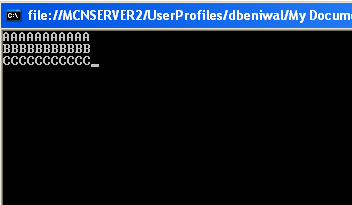Creating Threads in VB.NET
In this article you will learn how to create a simple Single Thread in VB.NET.
In computer science thread means a sequence of execution instructions that can run independently , that is a single flow of execution in a process. Thread is like a process, at least one thread exists within each process. Threading can be categorize into single or multithreading threading. Single thread means that only one task can execute and at the same time the other tasks have to wait for the completion of the current task like in a queue. Look at the following example to create a simple thread in VB.NET:
Module Module1
Sub TaskA()
Dim I As Integer
For I = 0 To 10
Console.Write("A")
Next
Console.WriteLine()
End Sub
Sub TaskB()
Dim I As Integer
For I = 0 To 10
Console.Write("B")
Next
Console.WriteLine()
End Sub
Sub TaskC()
Dim I As Integer
For I = 0 To 10
Console.Write("C")
Next
End Sub
Sub Main()
Dim A As System.Threading.Thread = New Threading.Thread(AddressOf TaskA)
Dim B As System.Threading.Thread = New Threading.Thread(AddressOf TaskB)
Dim C As System.Threading.Thread = New Threading.Thread(AddressOf TaskC)
A.Start()
B.Start()
C.Start()
Console.ReadLine()
End Sub
End Module
OUTPUT:

Here we create three simple threads to just understand how to create a Single Thread in VB.NET.